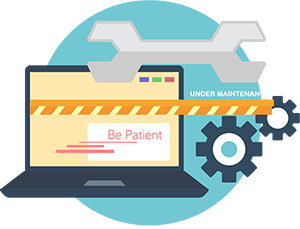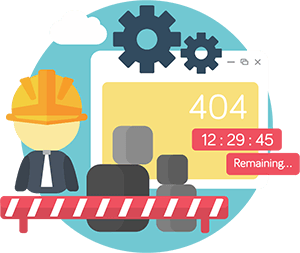Last updated on November 12th, 2024 at 03:16 pm

Small business website design planning is complete; now comes the launch. In Part 2 of my top 10 list, I highlight key areas for attention as you prepare to succeed online.
As my title suggests, I have split this list into two parts for you to enjoy. The parts are:
- The planning and approach stage.
- The post launch and management stage. This article.
Let’s continue with points 6 to 10…
6. Get social and include the ability to share your new design

Your company and its products and services need to be out in front of prospective customers online. This is hard work.
Thankfully, you can get some help online through the wonderful world of social media.
On every page of the website, make sure you include the ability for your visitors to share your content on sites such as X (formely known as Twitter), Instagram, TikTok and Facebook.
There are lots of free tools online to help you complete this task.
7. Make your call to action clear
Reaching this stage of your project takes a lot of hard work, and you are now ready to attract visitors.
Once they land on your site, you want them to act.
Remember your site purpose? This is where that element comes into its own. You need the visitor to carry out your wish, and by doing so, they can either buy a product, contact you, or sign up for your newsletter.
To get them to act requires a call to action, just like the button at the start of this point.
Make the call clear: What do you want them to do? Make it easy for them to do it. Never overcomplicate the process.
Choose an effortless way to get your visitor to spot your call to action: big, clear buttons and images. They always work best.
8. Easy to spot contact details
When you develop your new site, be sure to include either
- Your telephone number and/or address
- An internal link to a contact page with all the details on it
Including contact details on every page will help you for two key reasons:
- Trust. Your customers know who you are and how to reach you.
- Connections. It is a great lead generator, as it helps your customers reach you if they have a question.
9. Regular revisions of your company website
Your website is a constantly developing leg of your business, and regular maintenance is a vital consideration for any business launching a new website.
Once you have completed the launch of your new small business website design, the hard work really starts.

Neglect these tasks at your peril if you launch and leave your website;
- Keep your plugins and themes not only up to date but also free of spam
- Renew security certificates when they expire.
- Add fresh content for your visitors to enjoy.
- Maintain your technical elements (such as web hosting and site coding).
- Keep ahead of the competition in the search engine pages.
and so many more…
The internet, its users, and your competition are strengthening daily, and so must you.
At least once a month, it will pay to run a weathered eye over your layout and content to make sure all is well. For example,
- No issues have appeared, such as broken links.
- The navigation is still working.
- Visitors can still use your website.
- Your call-to-action links still work.
Tools exist, and I always run a manual audit using my favourite tool, Screaming Frog (no affiliation). You can use their free tool here and check out your website.
10. Ongoing website management for small businesses

Your website will need updating. This task is much easier when using a content management system (CMS) such as WordPress. Similarly, Joomla is also a well-used system, although it is more suited to larger websites.
This would allow members of your team to change the site content.
The technical management of your website can be very time-consuming and may take you away from growing your business.
Regular monitoring of elements such as
- Coding issues
- Plugin management
- Framework management
- Search engine optimisation
- Visitor tracking and reporting
- Conversion optimisation
With this in mind, it may be prudent for you to consider outsourcing the running of your website to a website manager while you serve your customers and deliver on your company goals.
To conclude, whether you are designing your website in-house or hiring someone to work on it with you, an effective way of ensuring your site is in perfect health at all times is a robust schedule of website maintenance.
From website management to search engine optimization, regular maintenance is the foundation on which every business online should be built. This will ensure you meet your customers’ needs and please the search engines when they visit.
This article was updated on 6th September 2024.